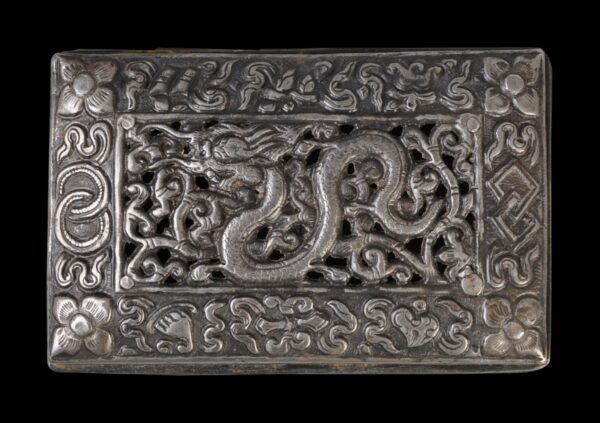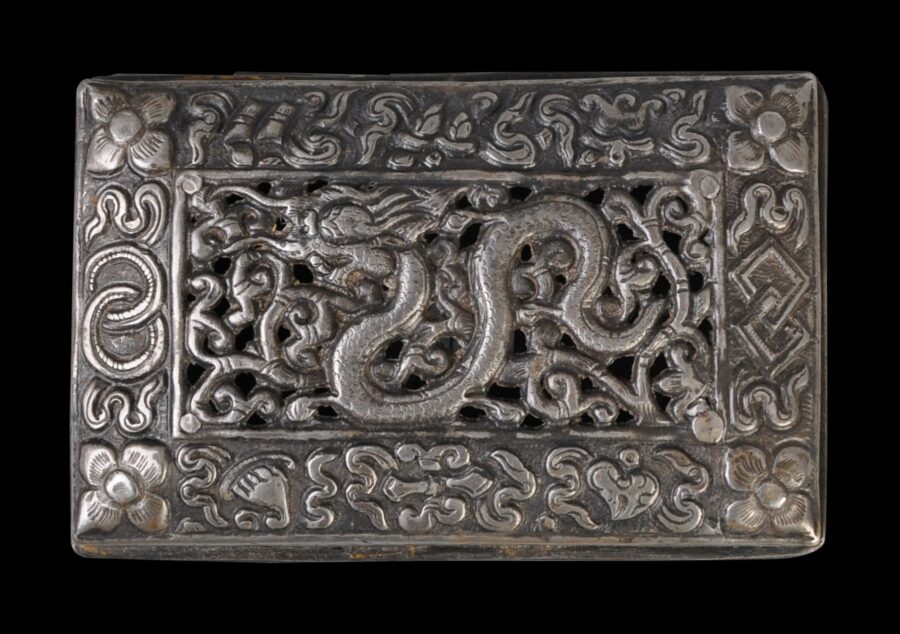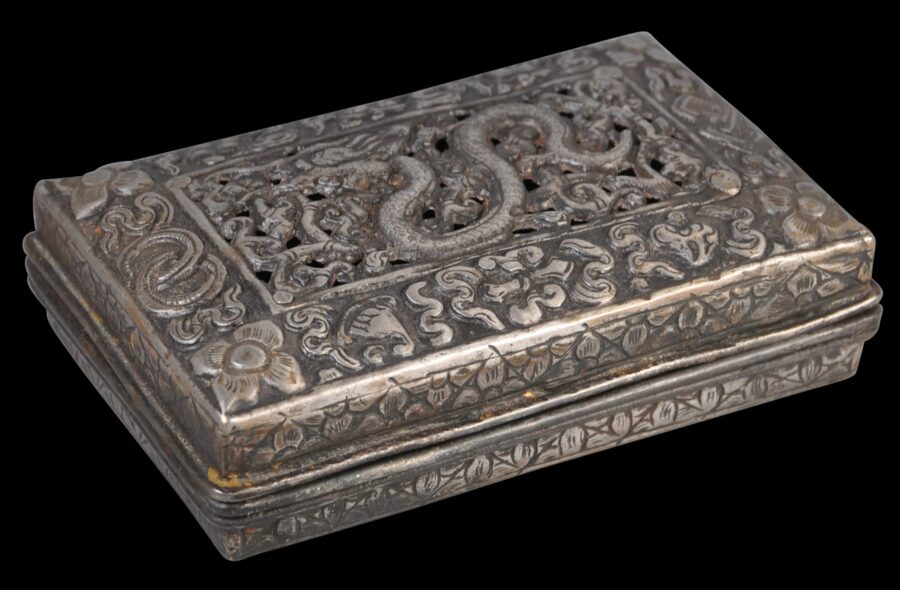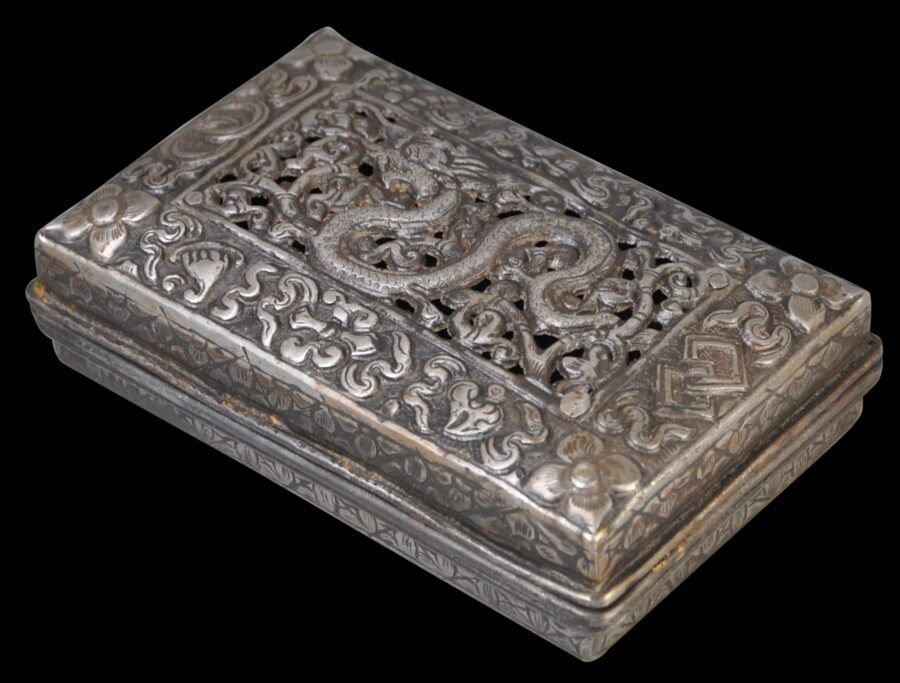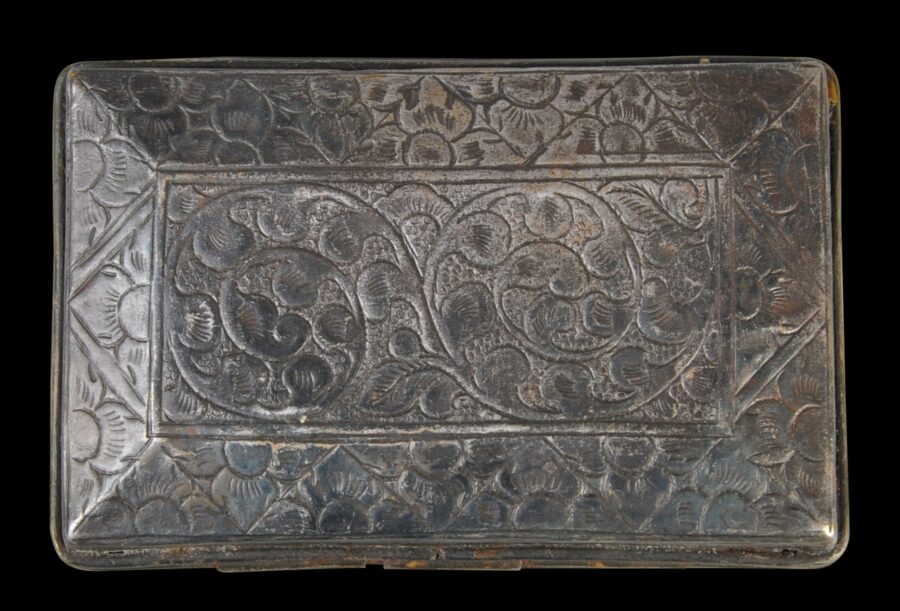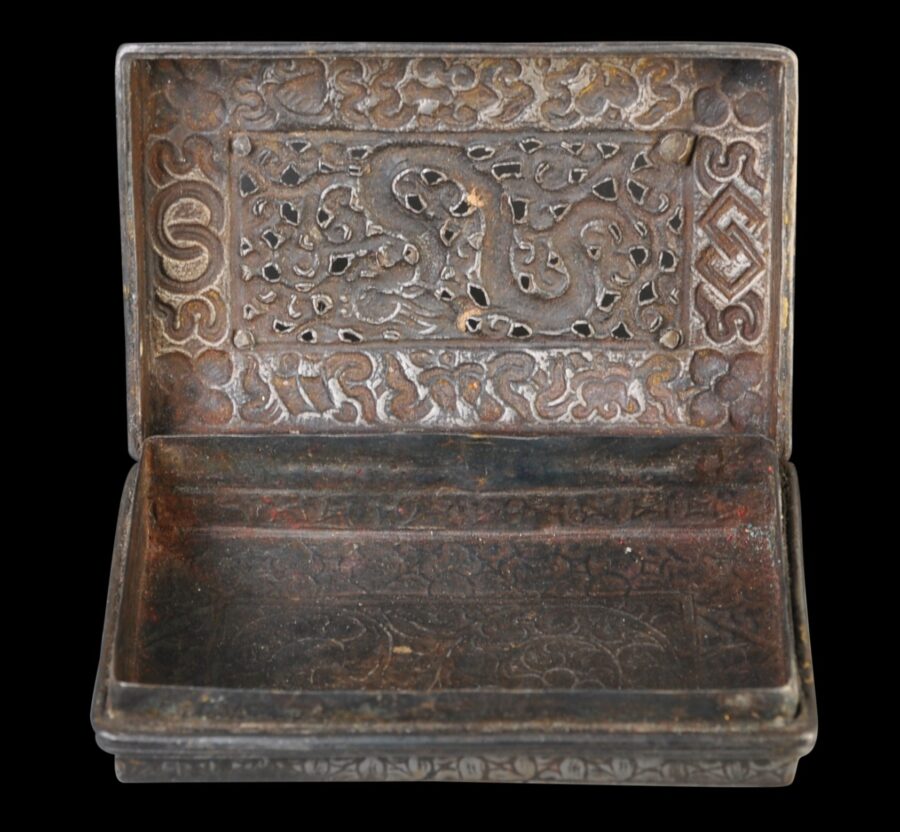This example of a Bhutanese box for betel follows conventional form in that it is rectangular but is unusual because it is made of iron. Usually, extant examples are made of silver. This, and the patina of the item, suggest that it is unusually early.
It comprises a hinged, domed base and slightly domed cover which has been been chased and pierced with a writhing dragon amid scrolling branches and foliage, all surrounded by a chiselled border of Himalayan Buddhistic motifs.
The sides of the box are engraved with flower patterns. The base is beautifully engraved with vegetal scrollwork.
Bhutanese men wore long robes and within the robes were large pouches or pockets in which a betel box such as this example might be concealed.
A later silver example is illustrated in Myers & Bean (1994, p., 123).
Betel or paan was chewed in Bhutan as it was (and in some cases, still is) in India and Southeast Asia. The actual nut comes from a certain palm tree which was sliced, wrapped in a betel leaf along with powdered lime (usually obtained from crushed, burned seashells or coral) and chewed to give a mild narcotic effect.
The box here is in fine condition. It is the only iron example we have seen.
References
Beer, R., The Encyclopedia of Tibetan Symbols and Motifs, Serindia, 2004.
Myers, D., and S. Bean (eds), From the Land of the Thunder Dragon: Textile Arts of Bhutan, Serindia, 1994.


